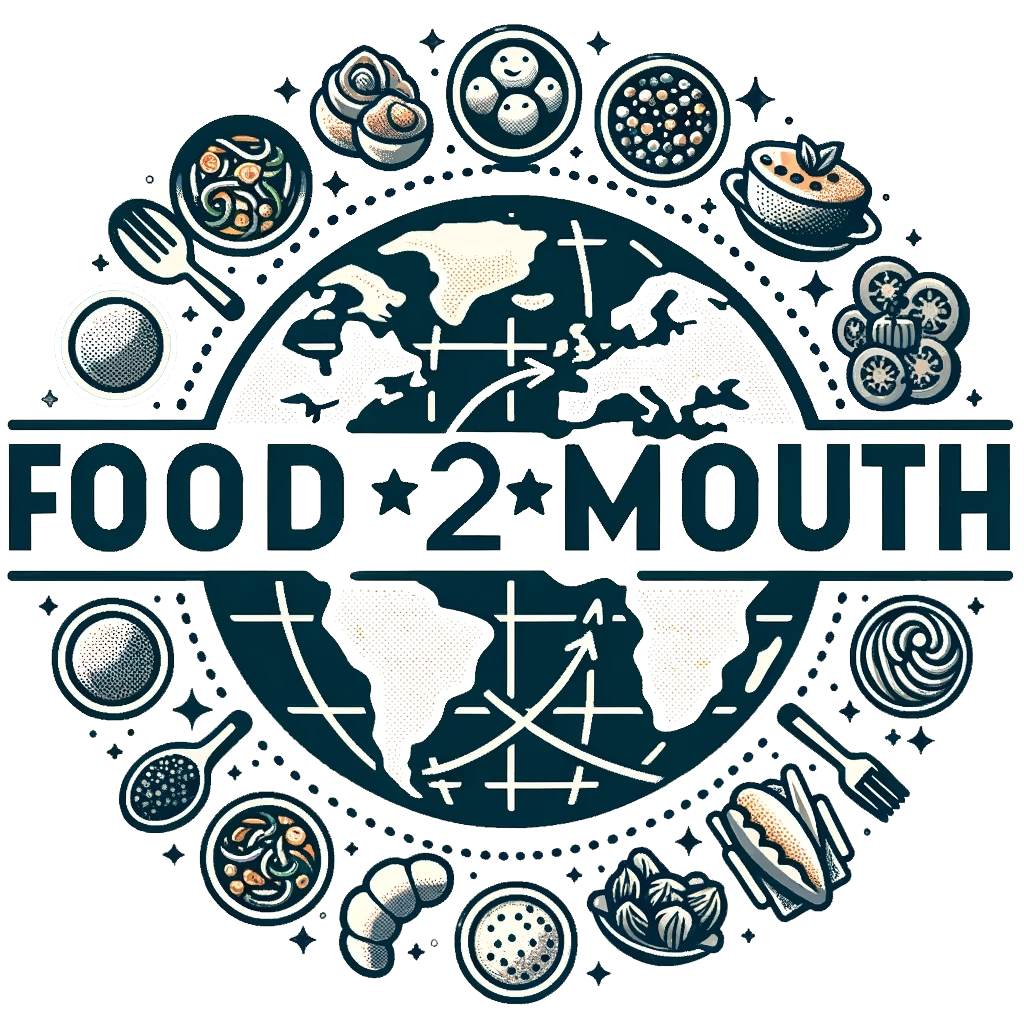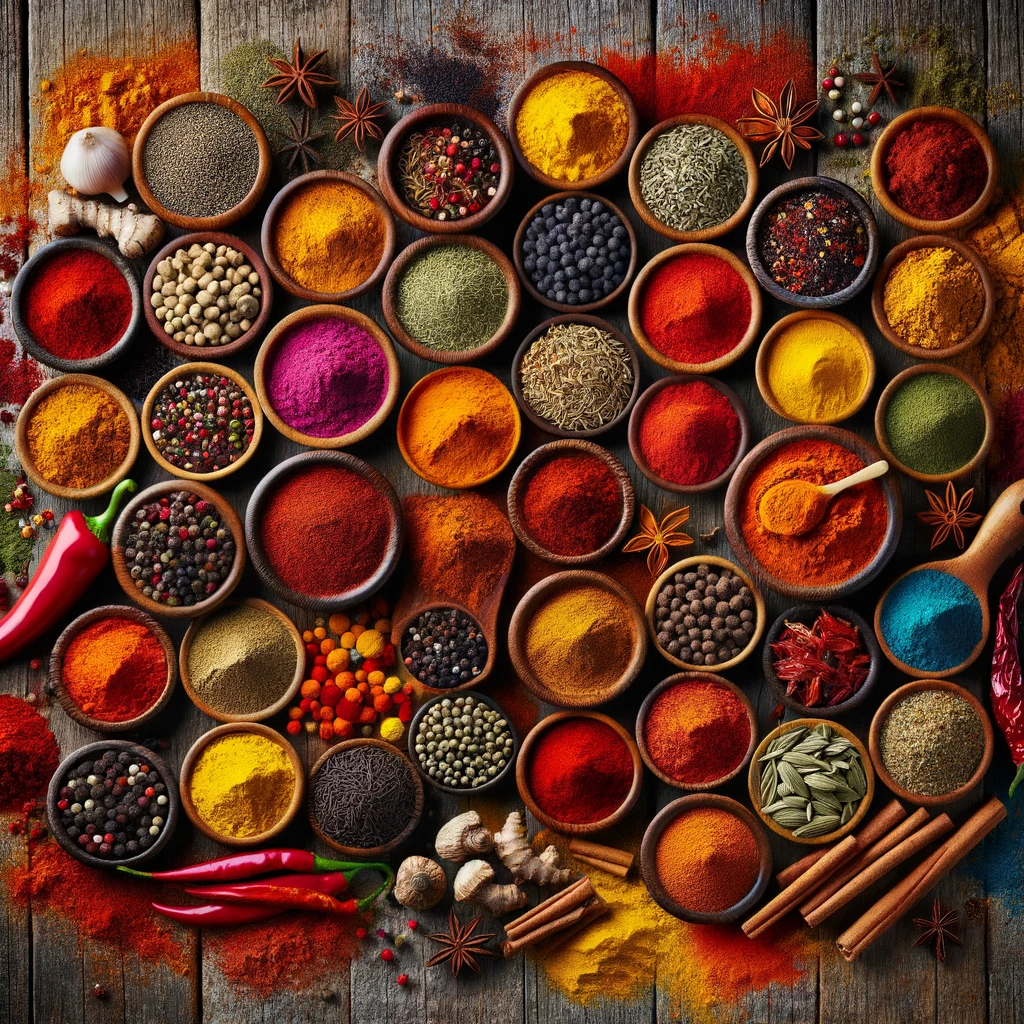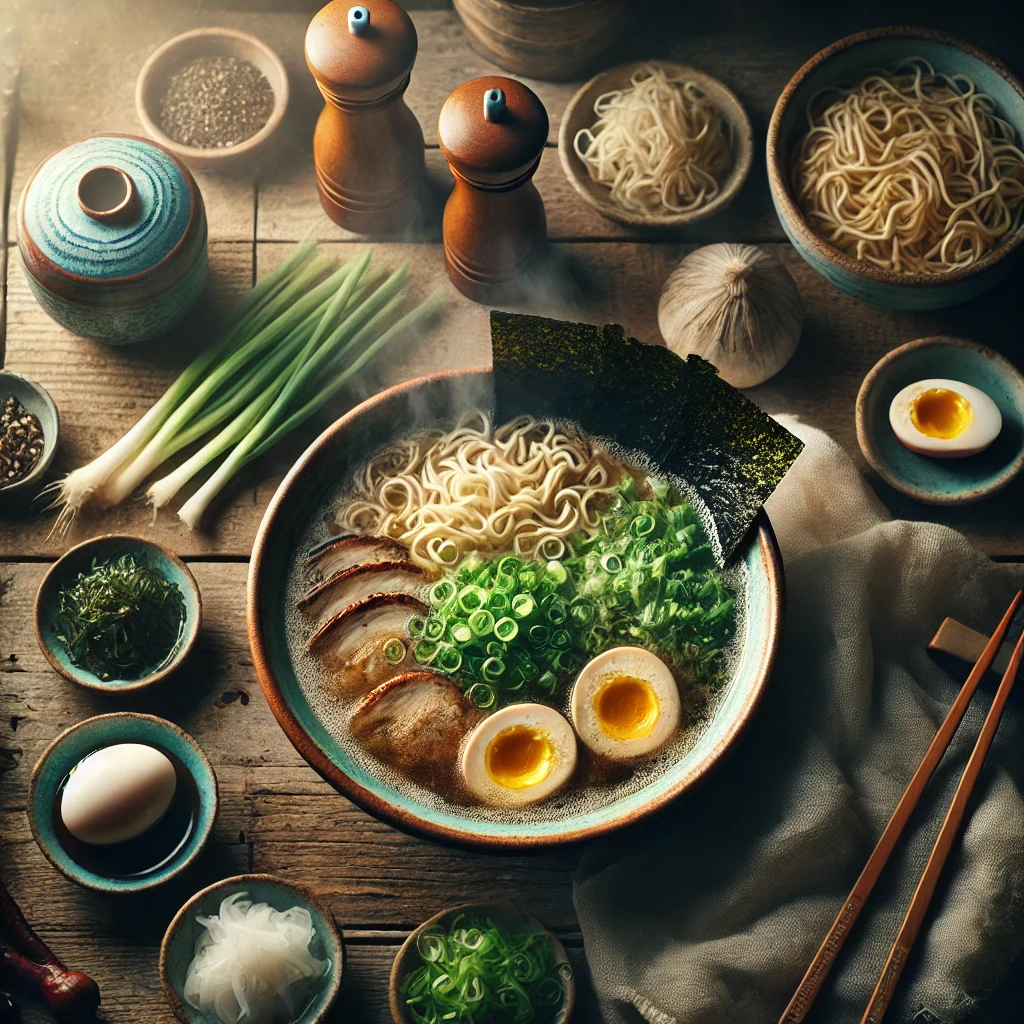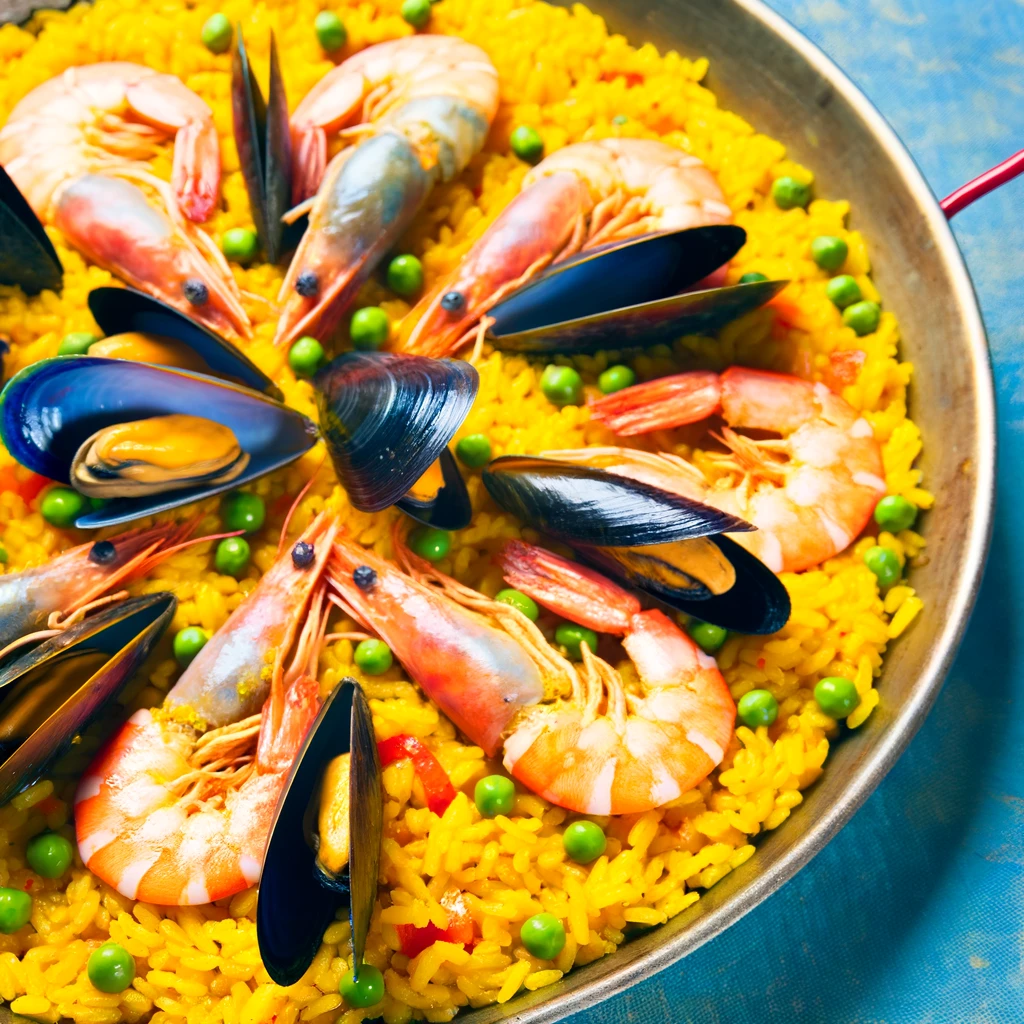The story of spices is a saga that intertwines culinary arts, global exploration, and cultural transformations. From the ancient markets of the East to modern gourmet kitchens, spices have been the unsung heroes of culinary evolution. This introduction sets the stage for a journey through time, exploring how these aromatic treasures shaped global cuisines and cultures.
The Origins of Spice Usage
Spices, revered for their multifaceted roles in flavor, preservation, and medicine, have deep historical roots in various ancient civilizations. This section explores the earliest documented use of spices in ancient civilizations, with a special focus on India, China, and the Middle East. In these regions, spices were more than just culinary additives; they were symbols of wealth and power. Additionally, they were revered for their health benefits, intertwining their use with medicine and wellness practices.
- India: The Cradle of Spice History
In India, spices have been integral to the culture and cuisine for thousands of years. Ancient Indian texts, such as the Vedas, written around 2000 BCE, mention the use of spices like ginger, black pepper, and turmeric. These were not only used in cooking but also in Ayurvedic medicine, where spices played a crucial role in healing and wellness. The Indus Valley Civilization shows evidence of spice trade, indicating India’s central role in early spice commerce. - China: Spices in the Ancient Far East
Chinese use of spices dates back to the early dynasties. Ancient Chinese medical texts, notably the “Shennong Bencaojing” written between 300 BC and 200 AD, highlight the use of spices for medicinal purposes. This text details the application of various spices like star anise, Sichuan pepper, and cinnamon, which were staples in traditional Chinese medicine. These spices were used to treat a wide range of ailments, showcasing their versatility in health and wellness. Beyond their medicinal uses, spices in ancient China also held significant social value. They were symbols of status and wealth, frequently used in religious rituals and as offerings to deities. - The Middle East: A Crossroads of Spice Trade
The Middle East served as a crucial nexus in the early spice trade, bridging Eastern and Western worlds. Spices from India and the Far East traveled through the Middle Eastern caravans to reach Europe and Africa. Records from ancient Sumeria and later Islamic texts illustrate the use of spices in both culinary and preservative capacities. The region’s cuisine evolved around the use of spices like cumin, coriander, and saffron, deeply influencing the culinary traditions of the Mediterranean and beyond.
The Spice Trade: A Catalyst for Exploration
The spice trade, spanning several centuries, was not just a commercial enterprise but a significant catalyst for global exploration and cultural exchange. This period marked the beginning of a transformative era where the quest for spices drove explorers to venture into unknown territories, leading to pivotal discoveries and profound global impacts.
- The Allure of Exotic Spices
Spices like cloves, nutmeg, cinnamon, and black pepper were highly prized in medieval Europe for their rarity and exotic appeal. They were used not just in cooking but also in medicine and as a status symbol among the elite. This high demand made spices more valuable than gold, driving European powers to seek direct access to the spice-producing regions of Asia. - Voyages of Discovery
The spice trade was a primary motivator for the age of exploration, led by figures like Vasco da Gama and Christopher Columbus. These explorers set out to find sea routes to the spice-rich East Indies, leading to the discovery of new lands and sea passages. Da Gama’s successful voyage to India via the Cape of Good Hope marked a significant breakthrough, establishing a sea route that would dominate the spice trade for centuries. - Cultural and Economic Impacts
The spice trade brought about profound economic and cultural changes. It led to the establishment of trade routes, colonization of new lands, and the rise and fall of empires. European nations, such as Portugal, Spain, the Netherlands, and Britain, established colonies in Asia and the Americas to control the production and trade of spices. This not only transformed the global economy but also led to the exchange of cultures, cuisines, and ideas, significantly shaping the modern world. - Spices as a Tool of Colonial Power
The control of spice routes and regions became a symbol of power and dominance. Powers used military force and strategic alliances to dominate the spice trade, causing conflicts and subjugation. This period witnessed the rise of influential trading entities. The Dutch East India Company became prominent in commerce and politics. Likewise, the British East India Company played a key role in its nation’s affairs. These companies were central to their countries’ spice trade control.
Spices and the Culinary Transformation
The integration of spices into global cuisines has been a transformative process, deeply influencing cooking methods, flavor profiles, and even the cultural identity of various cuisines around the world. This section delves into how spices have revolutionized culinary practices and preferences.
- Enhancing Flavor and Diversity
The introduction of spices like pepper, cinnamon, nutmeg, and saffron transformed bland diets by adding depth and complexity to dishes. This not only improved the palatability of food but also spurred a newfound appreciation for diverse flavors and textures. Each region began incorporating these exotic spices into their traditional dishes, creating a fusion of local and foreign culinary techniques. - Preservation and Medicinal Use
Before the advent of modern preservation methods, spices played a crucial role in food preservation. Their antimicrobial properties helped in extending the shelf life of perishable foods, especially in warmer climates. Moreover, many spices were valued for their medicinal qualities, used to treat a range of ailments from digestive issues to infections, thus becoming integral to traditional medicine practices. - Social and Economic Influence
The use of spices in cooking became a marker of social status and wealth. In medieval Europe, for instance, the presence of spices in a dish was often a display of affluence. Spices also influenced local economies, as their demand fostered the growth of spice markets and trade centers. This in turn affected agricultural practices, with many regions cultivating exotic spices to meet the growing demand. - Culinary Innovations and Trends
The accessibility of spices sparked culinary innovation, with chefs and cooks crafting new combinations. These experiments led to signature dishes, now staples in global cuisine. For instance, spices define Italian pasta sauces, Indian curries, and Thai stir-fries. The modern culinary landscape is constantly evolving, embracing new trends. Fusion cuisine, for example, blends spices from various cultures for innovative flavours. - Influence on Dietary Habits
Spices have also impacted global dietary habits. For instance, the introduction of spicy flavors has been linked to an increased consumption of vegetables and legumes in certain diets, as spices make these ingredients more appealing. This shift has had health implications, contributing to more balanced and nutritious diets.
The story of spices in culinary transformation is one of globalization, innovation, and cultural exchange. From enhancing the flavor of food to becoming a symbol of social status and inspiring new cooking trends, spices have profoundly influenced the culinary world.
Modern Fusion: Spices in Contemporary Cooking
In today’s globalized culinary scene, spices break traditional boundaries, fostering innovative fusions. This section examines how chefs and home cooks use spices in modern dishes. They’re creating a vibrant tapestry of tastes from multiple cultures. It highlights the role of spices in contemporary culinary innovation. This blend of flavours showcases a diverse, global kitchen.
- Global Culinary Exchanges
The ease of global travel and digital communication has facilitated a rapid exchange of culinary ideas.Chefs are innovating by blending spices from various cultures into their dishes. Traditional European recipes are being transformed with Asian spices. Ingredients like lemongrass or Szechuan pepper add exciting new flavors. This fusion results in unique and tantalizing culinary creations. It exemplifies the growing trend of global culinary integration. - Health and Wellness Trends
The rise in health-conscious eating has brought a renewed focus on the health benefits of spices. Turmeric, for example, is highly regarded for its anti-inflammatory properties and is being incorporated into a variety of dishes, from smoothies to rice bowls. This trend has led to the popularization of spices that were previously limited to specific ethnic cuisines. - Experimental Cooking and Molecular Gastronomy
The world of molecular gastronomy has opened up new possibilities for using spices. Techniques such as infusion, dehydration, and foam creation are being used to extract and present the flavors of spices in innovative ways. Chefs are experimenting with creating spice-infused airs, gels, and crystals to enhance the sensory experience of their dishes. - Vegetarian and Vegan Cuisine
As more people adopt vegetarian and vegan diets, spices have become essential in making plant-based dishes more flavorful and appealing. Spices like cumin, coriander, and smoked paprika add depth and richness to vegetable-based dishes, making them more satisfying for both vegetarians and meat-eaters. - Ethical and Sustainable Sourcing
The modern consumer is increasingly aware of the origins of their food, including spices. There is a growing demand for ethically sourced and sustainable spices. This consciousness has led to a rise in organic spice farming and fair trade practices, ensuring that spice cultivation benefits local communities and does not harm the environment. - Home Cooking and Spice Blends
The popularity of cooking shows and food blogs has inspired a new generation of home cooks to experiment with spices. Homemade spice blends, like custom curry powders or unique barbecue rubs, have become a way for individuals to personalize their cooking and express their culinary creativity.
The fusion of spices in contemporary cooking is not just a culinary trend; it’s a reflection of our interconnected world. By blending spices from different cultures, modern cuisine is embracing diversity, fostering innovation, and creating a rich, global culinary heritage.
Conclusion: The Enduring Legacy of Spices
The journey of spices through centuries of human history is not just a tale of culinary evolution but also a testament to their enduring legacy in shaping cultures, economies, and cuisines worldwide. This concluding section reflects on the lasting impact of spices and their continuing relevance in the modern world.
- Cultural Significance
Spices have historically been much more than just agents for flavoring food; they hold a deep-rooted place in cultural rituals and traditions worldwide. One notable example is the use of cinnamon in ancient Egypt, where it played a crucial role in the embalming process. Similarly, in various cultures around the world, spices are integral to religious ceremonies. This widespread use of spices demonstrates their profound cultural significance, a resonance that goes beyond mere culinary applications. Their importance in such diverse practices reflects a connection that transcends both time and geography. - Economic Impact
Historically, the spice trade has been a significant economic force, fostering trade routes and interactions between distant lands. Even today, the spice industry remains a vital part of the global economy, supporting the livelihoods of millions of farmers and traders worldwide. - Culinary Influence
The influence of spices on global cuisine is immeasurable. They have been the cornerstone of flavor in dishes around the world, continuously inspiring chefs and home cooks alike. The ongoing fusion of spices in modern cuisine reflects the dynamic and evolving nature of culinary arts, driven by curiosity and a desire to experiment. - Health and Wellness
The rediscovery of spices as health-boosting ingredients has given them a new dimension in the contemporary world. Their medicinal properties, long recognized in traditional medicine, are now being validated by modern science, leading to a resurgence in their use for health and wellness. - Sustainability and Ethical Sourcing
In the modern context, the story of spices also includes a growing awareness of sustainability and ethical sourcing. This renewed focus ensures that the legacy of spices is not only preserved but also enriched, as it becomes part of the broader conversation about responsible consumption and environmental stewardship. - Educational Value
The history of spices is a valuable educational tool, offering insights into world history, economics, and cultural studies. By understanding the spice trade, one can gain a deeper appreciation of global interconnections and the historical forces that have shaped our world.
In conclusion, the legacy of spices is a multifaceted one, embodying a rich tapestry of history, culture, economy, and cuisine. As we look to the future, spices will undoubtedly continue to play a significant role, not just in the culinary world but also as symbols of our interconnected, diverse, and ever-evolving global community.



